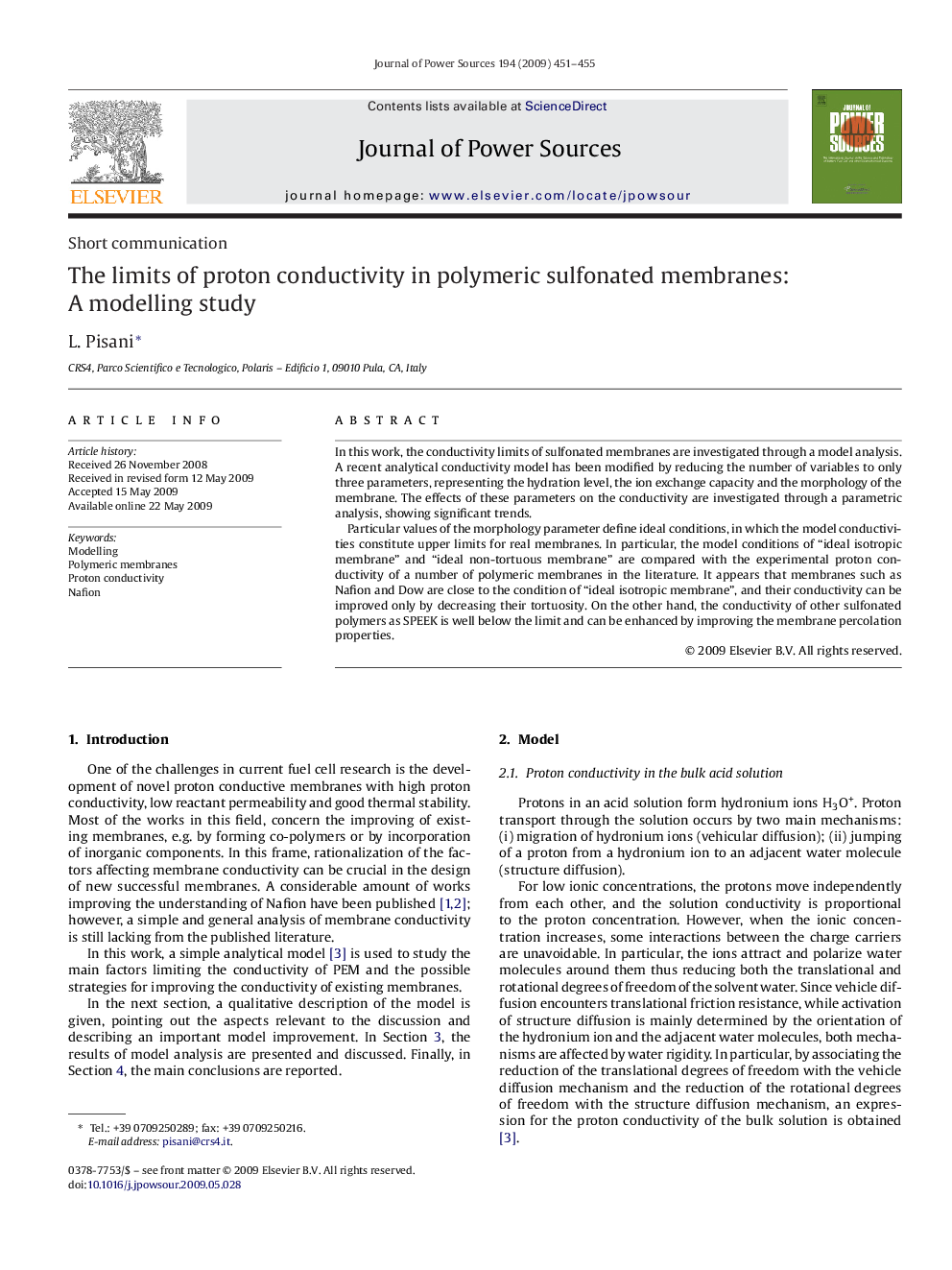| Article ID | Journal | Published Year | Pages | File Type |
|---|---|---|---|---|
| 1289864 | Journal of Power Sources | 2009 | 5 Pages |
In this work, the conductivity limits of sulfonated membranes are investigated through a model analysis. A recent analytical conductivity model has been modified by reducing the number of variables to only three parameters, representing the hydration level, the ion exchange capacity and the morphology of the membrane. The effects of these parameters on the conductivity are investigated through a parametric analysis, showing significant trends.Particular values of the morphology parameter define ideal conditions, in which the model conductivities constitute upper limits for real membranes. In particular, the model conditions of “ideal isotropic membrane” and “ideal non-tortuous membrane” are compared with the experimental proton conductivity of a number of polymeric membranes in the literature. It appears that membranes such as Nafion and Dow are close to the condition of “ideal isotropic membrane”, and their conductivity can be improved only by decreasing their tortuosity. On the other hand, the conductivity of other sulfonated polymers as SPEEK is well below the limit and can be enhanced by improving the membrane percolation properties.
